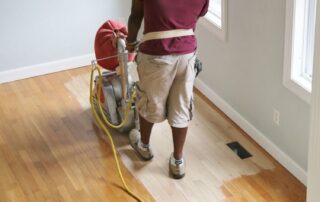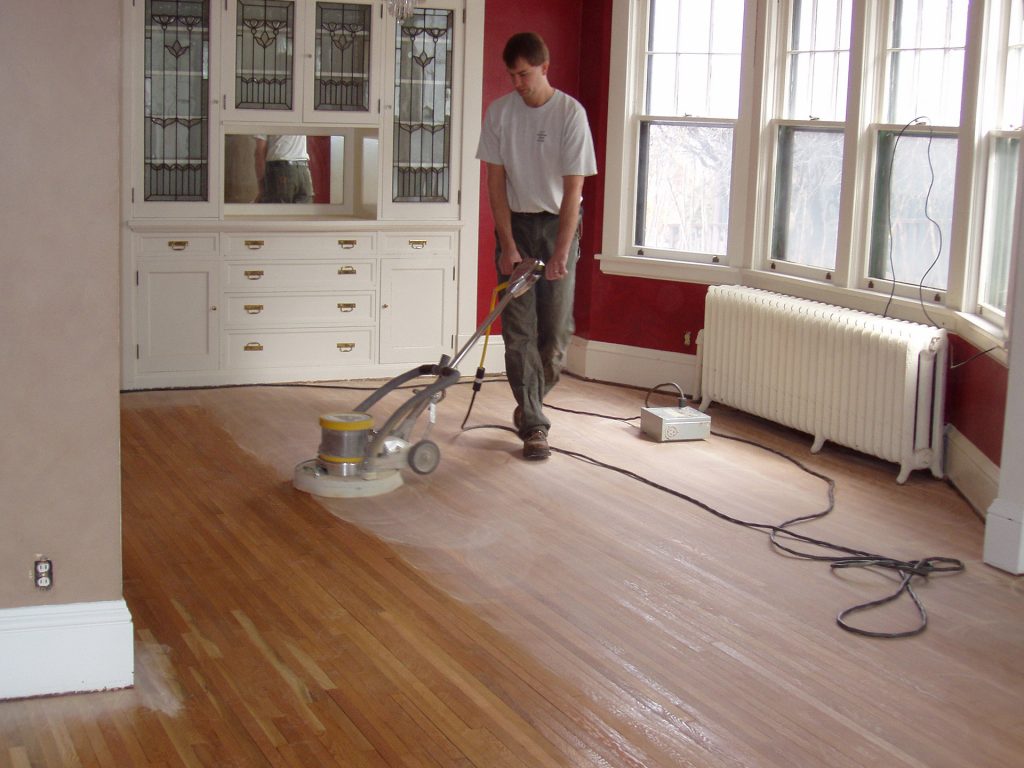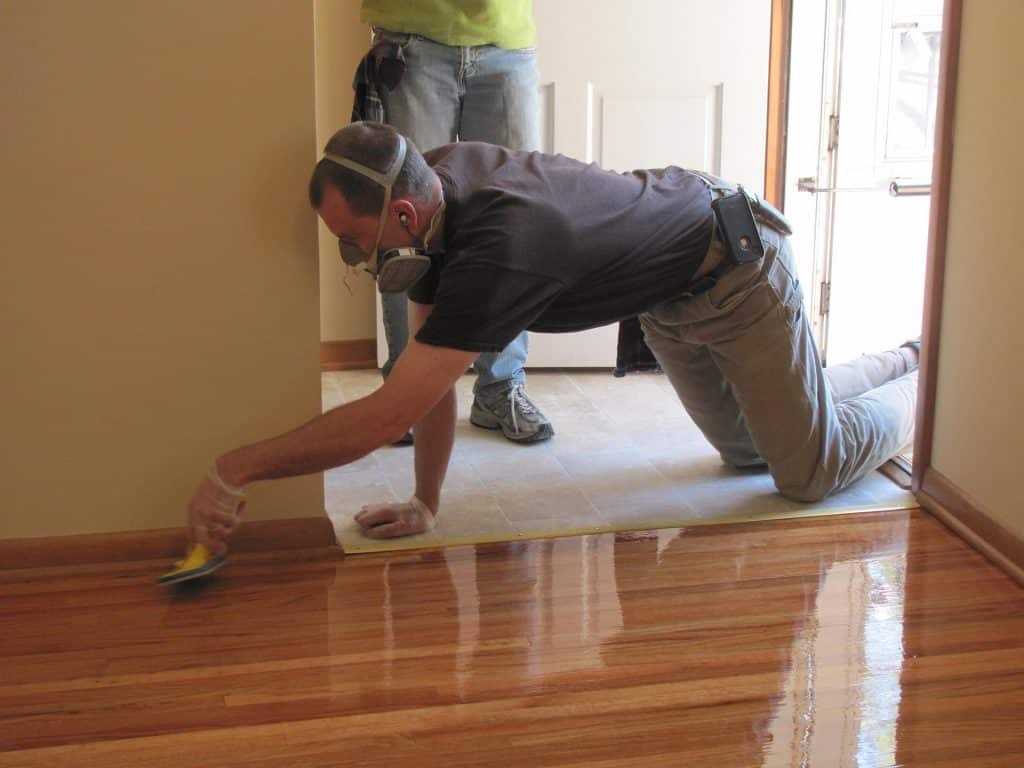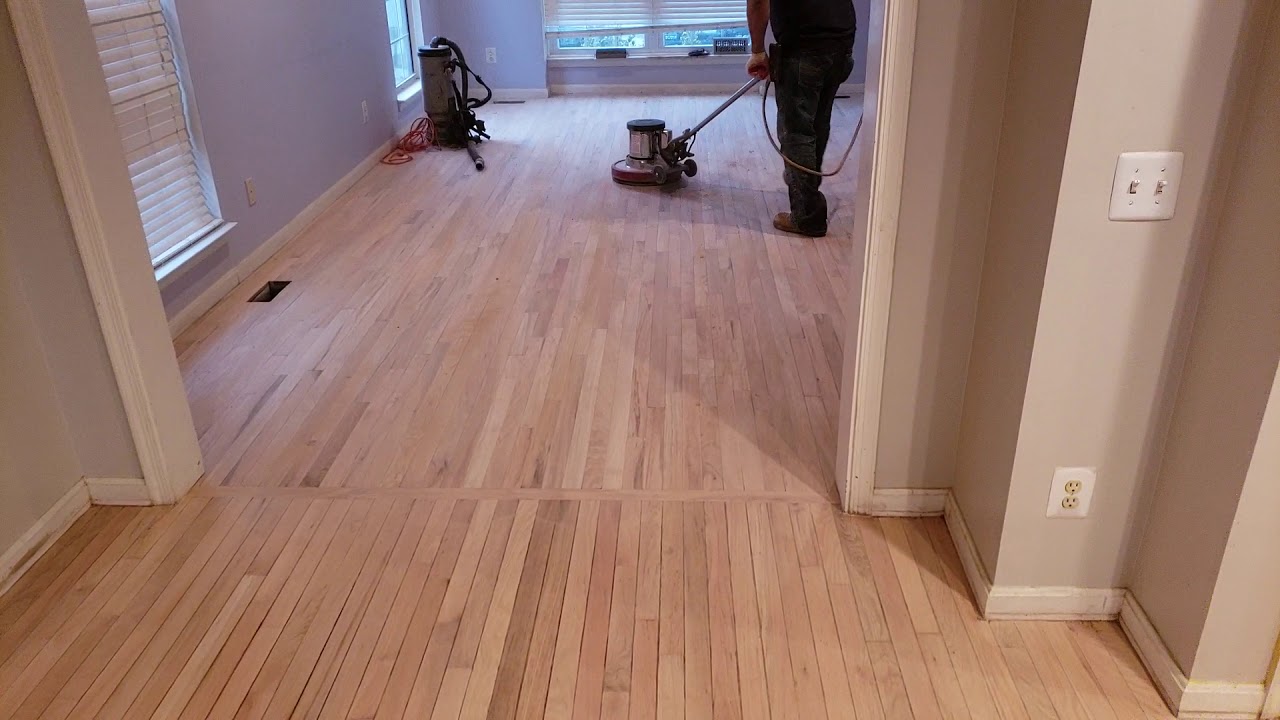Serving All of Southern California
Expert Hardwood Sanding, Restaining & Refinishing
We are experts in revitalizing your old floor with Hardwood Sanding, Restaining & Refinishing!
Revive Your Old Worn Out Floor- Don’t replace! We can even change your color (see our stain color guide). If your floor is worn down, dirty, we can refinish it, and often without sanding it. However, if we do need to completely resand it, and restain it and recoat it, we can. We will revitalize your floor to do not only what’s right for your floor, but what’s right for you. So call us today, to get the beautiful floor you deserve, Call (714) 553-3736
Is it easy to refinish hardwood?
The staining and refinishing of hardwood floors will take about four days to complete if you’re doing this home improvement project on your own. As you will discover, refinishing your home’s floors will take some time, but if you pay attention to each step and use the right tools, you will have like-new hardwood flooring in no time. Whether you’re remodeling a single room or the flooring across your entire house, refinishing hardwood floors is a great option for homeowners. The best choice for DIY hardwood floor refinishing is a random orbital sander. They take longer than drum sanders to remove old finishes, but they are easier to use and less likely to harm your wood floor. You can work either with the wood grain or against it while using a random orbital sander. Just make sure to always keep the sander level. Even an orbital sander can “run away” from you and leave behind difficult-to-clean sander lines. However, you will find that this is harder than you thought, so when you need us, we will help out, call us at (714) 553-3736. Also, your floors can only take 3 sandings or so, so before you start, please count the cost of whether you know what you’re doing or have another sand left for us to re-do your work.
How to use a sander for refinishing hardwood?
One of the most important tasks in refinishing hardwood floors is sanding them, which leaves the entire surface of the floor stained-free. You should always have a helper while moving sanders from the rental store to your home, just like with any other home improvement activity, to prevent back injuries. When possible, move the machine using ramps. Get assistance moving large pieces of furniture out of the room as well. Throughout the project, you must also maintain appropriate form while sanding while hunched over, Sanding and refinishing hardwood floors produce a lot of dust and fumes. When applying sealers and oil-based polyurethane, wear organic vapor respirators that have been authorized by NIOSH, neoprene or vinyl gloves, and eye protection with splash guards. Stock up on dust masks and earplugs as well. Additionally, plastic sheeting will need to be hung up to stop dust from spreading throughout your house. Make careful to select the proper plastic material based on the desired level of durability and cover vents to reduce dust. Start with using coarse-grit sandpaper, which will remove most surface scratches and the original finish. Using grits no finer than 60 will assist you avoid scratching the flooring. As you go, use progressively finer abrasives to get the appropriate level of smoothness. The floor sander should be moved as if you were mowing the lawn. Row by row, overlap runs by half the width of the sander. You’ll need to use each grit several times. You can use a palm sander to sand close to baseboard moldings, but you should use a putty knife or sharp scraper to remove any old finish that the sander might have missed. With scrapers, you may access crevices without using the sander to remove a lot of material. After you’ve completed sanding, vacuum up all the dust and use a tack cloth to clean the sanded areas. If you still have at least one coat to apply and you come across stray hair embedded in dry polyurethane, lightly sand over the hair with a very fine abrasive. Resand after that, being careful not to scratch the stain layer with the same extremely fine abrasive. The hair mark will almost completely disappear after recoating with poly.
What is the easiest way to refinish wood?
Although a sealer coat is not usually necessary, it will help assure even stain coverage if your floor absorbs stains unevenly. Applying stain to a hidden region that won’t be seen once the furniture is put back in its place will allow you to check this. It’s crucial to spread the sealant out evenly. Otherwise, after staining hardwood floors, stop marks and lap markings could be visible. It’s difficult to apply wood stain uniformly, especially over a wide surface. The best method, in my opinion, entails applying the stain using an applicator to a single, small area at a time, wiping off any excess with a rag, and repeating as necessary. You’ll get lap marks if you let the leading edge of your job dry. Water-based stains dry more quickly than oil-based stains. Many professionals may pour polyurethane down the floor before spreading it with a lamb’s wool applicator that is 18 inches long, but this will likely leave a coating that is too thick for a beginner. Rolling on the polyurethane with a foam roller, particularly a high-density foam roller, is a better method for the do-it-yourselfer. The finish will be glassy smooth and the coat will be thin and even. For cutting in around the room’s edge, use an excellent brush. Start your applications on the wall next to the door you want to use to leave. Work in parallel rows in the direction of the door-facing wall. As you draw near, you must alter your method of construction and move from the end walls toward the door. Because of this, it is difficult to apply continuous smoothing strokes; instead, add a little extra poly and rely on its self-leveling characteristics for a smooth finish.
Can you sand and refinish Engineered hardwood floors? Yes! but read on…
Sanding and restaining engineered hardwood floors is possible, but it requires careful consideration and planning. Unlike solid hardwood floors, engineered hardwood consists of a thin layer of hardwood veneer on top of multiple layers of plywood or high-density fiberboard (HDF). The thickness of the hardwood veneer determines the number of times the floor can be sanded.
Here are some important points to consider:
- Thickness of the veneer: Engineered hardwood floors typically have a veneer thickness ranging from 0.6mm to 6mm. The number of times you can sand and refinish the floor depends on the thickness. Thicker veneers can withstand more sanding compared to thinner ones.
- Professional assessment: It is essential to consult with a professional flooring contractor or manufacturer to determine the thickness of the veneer and whether the floor can be sanded. They can assess the condition of the floor and advise on the feasibility of sanding and restaining.
- Light sanding and refinishing: If the veneer is thick enough, a light sanding and refinishing may be possible. Light sanding involves removing a minimal amount of the existing finish to prepare the surface for refinishing. This method is less aggressive and reduces the risk of sanding through the veneer.
- Stain compatibility: Before restaining an engineered hardwood floor, ensure the chosen stain is compatible with the type of wood and the existing finish. Test the stain on a small, inconspicuous area of the floor to ensure the desired color and compatibility.
- Professional refinishing: Sanding and refinishing engineered hardwood floors is a complex process that requires professional expertise. Hiring a professional flooring contractor with experience in refinishing engineered floors can help ensure a successful outcome.
- Warranty considerations: Sanding and refinishing engineered hardwood floors may void the manufacturer’s warranty. Check the warranty documentation or contact the manufacturer to understand the warranty terms and any restrictions regarding sanding and refinishing.
Remember, not all engineered hardwood floors are suitable for sanding and restaining, particularly those with very thin veneers. It’s crucial to seek professional advice and carefully evaluate the condition of the floor before proceeding with any refinishing project.





